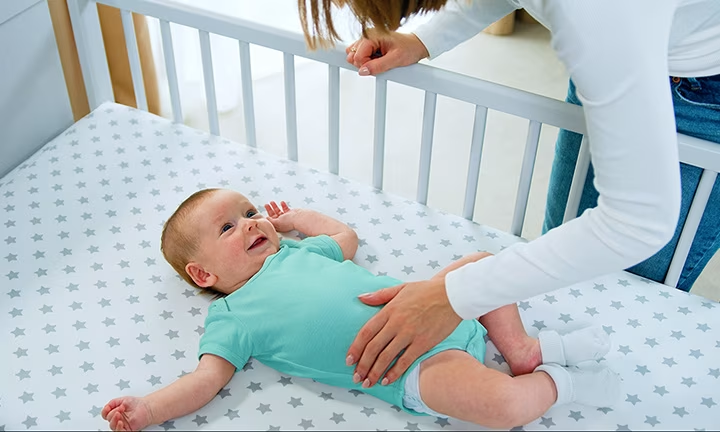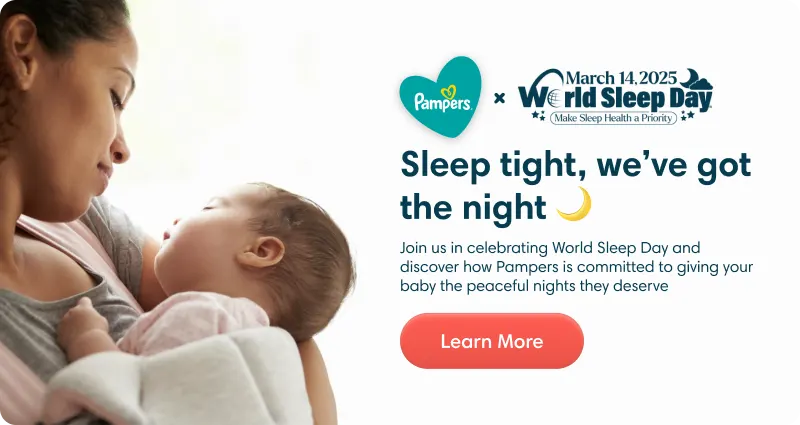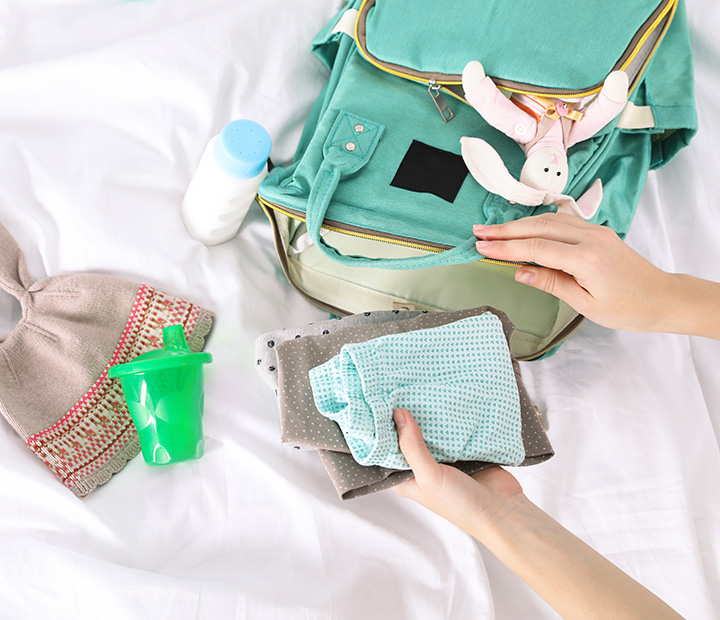
What to Dress Your Baby in at Night
Ensuring your little one stays comfortable throughout the night is something we all care about. Choosing the right sleepwear can be overwhelming with the unpredictable UK weather. So, what should you dress your newborn or older baby in at night? We’re here with some guidance for a peaceful and safe sleep. From checking the room temperature to selecting the cosiest sleepsuits and sleeping bags, we’ll cover it all. Let’s make bedtime a breeze with some tips on how to dress your baby for sleep.
What Should Your Baby Wear to Bed?
As a parent, you understand the importance of a good night’s sleep for both you and your little one. So, ensuring your baby is dressed comfortably for bedtime is one key to a restful night. That’s why a common question from new parents is, ‘What should my baby wear to bed for a good night’s sleep?’ The ideal sleep attire may vary depending on the temperature and your baby’s preference, but it’s important not to overdress your baby or use too much bedding. Let’s explore some of the recommended safe and cosy options, including sleepsuits, sleeping bags and blankets.
Sleepsuits
Sleepsuits, also known as onesies or sleepers, are the preferred choice for many parents. They’re available in a variety of fabrics suitable for different temperatures, ensuring your baby stays warm without getting too hot. Look for soft, breathable materials, such as cotton, that gently embrace your baby’s body while allowing for freedom of movement.
Sleeping Bags
Sleeping bags for babies, or wearable blankets, are designed to provide warmth without the risk of loose blankets or sheets accidentally covering your baby’s head. Your baby’s sleeping bag should fit well around their shoulders to prevent the risk of their head slipping down. With a variety of togs (European warmth rating) available suited to different temperatures, you can select the perfect one to keep your baby snug and secure all night, no matter the season.
Blankets
While snug sleepsuits and sleeping bags are generally preferred, it’s important to follow safe sleep guidelines if you choose to use blankets or sheets. The NHS advises that any blankets should be lightweight cellular blankets and firmly tucked in no higher than your baby’s shoulders, lying flat below the arms to prevent them from wriggling down during the night.
What Should a Baby Wear To Sleep In Different Seasons?
Not too hot, not too cold, just right! The ever-changing seasons may present different challenges for dressing your baby for sleep. Here’s how to ensure your baby remains comfortable throughout the year with the right sleepwear for the temperature.
How to Dress Your Baby for Sleep in Summer?
During the warm summer months, you’ll likely need to dress your baby in less clothing for sleep. A light sleepsuit or vest, or even just a nappy paired with a thin cotton sleeping bag or single, well-secured sheet can provide the comfort they need without overheating. Be mindful of the room temperature, keeping it comfortable and ventilated to aid a tranquil sleep.
How to Dress Your Baby for Sleep in Winter?
Winter’s cold weather demands extra warmth. But you may be interested to learn that it’s better for babies to be cooler rather than too hot. You could dress your baby in a sleepsuit under a winter tog sleeping bag to keep them cosy for sleep. However, be cautious not to overdress your baby for sleep and don’t use thick, padded or fleecy blankets or extra layers of bedding. If your baby is cold, add an extra layer of clothing or a higher tog sleeping bag rather than extra blankets. You should also remove hats or any outdoor clothing when your baby is sleeping inside. It’s always advisable to check your baby’s neck or tummy for sweat when they’re sleeping to determine if they need fewer layers. We’ll discuss this further in our section below, Signs Your Baby Is Too Hot While Sleeping.
Baby Sleepwear Guide
Ensuring you have all the baby clothing you need is an important part of keeping your baby comfortable and safe, especially for bedtime. A room temperature of 16 to 20 degrees Celsius is a recommended baby sleep temperature all year round. But of course, it’s not always easy to maintain the optimal room temperature, especially during very hot or cold weather. That’s why it’s important to keep an eye on the room temperature and how comfortable your baby seems in order to dress them in the right sleepwear. Take a look at our helpful visual below for a guide on what clothing newborns or older babies should wear to sleep based on the room temperature.
Signs Your Baby Is Too Hot While Sleeping
Here are some telltale signs that your baby might be too hot while sleeping:
Remember, overheating not only disrupts their peaceful sleep but is also a risk factor for SIDS (Sudden Infant Death Syndrome) . So trust your instincts and keep these signs in mind to ensure your baby sleeps safely and comfortably.
What Happens If Your Baby Is Too Cold at Night?
As we mentioned earlier, cooler is better than too hot when it comes to your baby’s sleep temperature. However, your little one’s comfort is key, so look for signs that they might be too cold at night. Generally, a baby’s little hands and feet will feel cooler than the rest of them – this is normal. But if their hands and feet look blue or blotchy, you could warm them up with some cuddles or by putting on a pair of socks or mittens. If you suspect your baby is cold at night during the colder months, simply dress them in an extra layer or use a sleeping bag with a higher tog rating. Avoid using extra blankets, hats, hot water bottles or placing your baby’s cot next to a heater as these can cause your baby to overheat.
Tips for Baby Sleepwear
As you carefully choose the perfect outfit for your baby’s sweet dreams, keep these tips in mind:
Recommendations for Safe Sleeping
Your baby’s safety at night is your top priority. Here are some quick reminders to ensure a safe sleeping environment:
Combining your motherly instinct with these tips will help pave the way for many nights of safe, serene slumber for your little star. Find out more in our safe sleeping guide for infants .
FAQs AT A GLANCE
The best way to decide on your baby’s sleepwear is by considering both the room temperature and their comfort. The NHS suggests using lightweight sleepwear and perhaps a well-fitting baby sleeping bag with a tog rating suited to the season. Consider removing or adding layers of your baby’s clothing during sleep depending on whether they seem too hot or too cold. Remember, they should be cooler rather than too hot.
The Bottom Line
If you were wondering what to dress your baby in for sleep, with a little bit of knowledge and a lot of love, you can create a snug and secure sleep environment tailored to any temperature. Remember, the goal is a good night’s sleep for both of you, so trust your instincts along with these tips. Keep this guide handy as a helpful companion in your parenting journey, ensuring sweet dreams for your bundle of joy.
How We Wrote This Article The information in this article is based on the expert advice found in trusted medical and government sources, such as the National Health Service (NHS). You can find a full list of sources used for this article below. The content on this page should not replace professional medical advice. Always consult medical professionals for full diagnosis and treatment.







